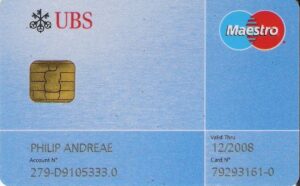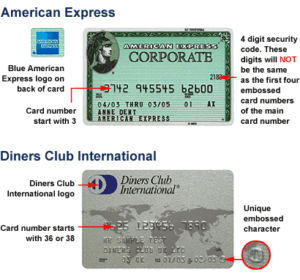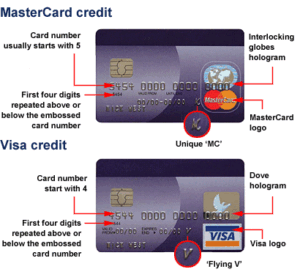In response to the article published by Consult Hyperion
Conference paper e-ID as a public utility Neil A. McEvoy
Universality
Interesting that as soon as you identify that I should be able to provide my identity to anyone anywhere you state that a national government can offer such a scheme. That is counter intuitive and fraught with the issue of achieving global standards of identification, given the bureaucracy of most national governments.
Yes, ICAO was able to agree on a template and specification for the e-passport. Fortunately they had a template and various agreements and treaties to justify the work. But when we start out with the basic premise that my identity is how I wish to project myself; we immediately move into a world of nuance with built in mechanisms to embrace and resist change. That being said Homo sapiens’ have a perchance to employ tools we morph as society and our world evolves.
Picking the right band of stakeholders to assure universality requires that at some point people abandon the idea that there is Profit in defining how we will digitally represent a person’s identity. Instead because the consumer/citizen wishes to project or required to provide their identity; we leave it to those seeking to receive the information to find the profit in knowing something about me.
Having been raised in America I am drawn to the words in our declaration of independence that give us the right to life, liberty and the pursuit of happiness. Behind these words I believe I also have the right to my privacy and do not want to learn that morphing my identity into a digital form puts my identity at risk. The citizen/consumer must be able to decide when and what information someone is able to scan.
All of this tempers my thinking about who should be engaged in defining the global standard for digital identity.
The two-way street
I could not say it better myself. Like my business card, a police persons badge or a company id card. We present these to each other to create trust between various parties and provide a degree of certainty that:
· I am who I say I am
· This is how you can locate and communication with me
· Here is proof that I have the following rights and capabilities
Quick transaction
Very well said the exchange of information about my identity must be as easy as handing you my business card. Everything after that is about the context of the transaction and will parallel the discussion and negotiations between the parties.
The gadget
My only addition to the supposition that the phone is the right gadget is the reality that we are talking about something that the citizen must be able to carry most anywhere. So it must be the one object we always carry. Some would argue this is the mobile phone; I would suggest that we not forget the more primitive device the purse or wallet. Maybe as we think of identity we must also think of ergonomists and think about merging the phone into the wallet not the wallet into the phone. Leather is eco-friendly warm and comfortable to the touch. Metal or plastic tends to be brittle and cold.
The next thought in respect to the gadget is it becomes the device I trust and will protect at almost any cost. Should I worry about how trustworthy your device is? All I want from you is the information you wish to share and any certificates others provide you that allow me to authenticate your rights and capabilities. My trusted gadget is what I use to share information and certificates and what helps me absorb and as appropriate verify information and certificates others offer to me.
Extensions
Yes my information is mine and what I offer to others is my choice.
Scheme considerations
I am not convinced of the need for a central register. Yes there is a need for third parties to attest to the citizen’s identity that others can trust and in lies the complexity of introducing a digital solution. In fact what the citizen needs is a device they trust. A device we trust, carries the information and certificates that third parties, who the counterparty trusts, capable of exchanging the appropriate digital data electronically. In order to achieve this goal we must develop and support a cascade of standards, regulations, contracts and relationships that enable global interoperability thus assuring a meaningful means of exchanging our digital identity.
Before we go about defining the techniques that should be employed, I think we must first establish base principles. Key must be the idea that there is no centralized register. Instead those parties we as consumers are willing to trust and wish to position themselves as trusted third parties can build registries, recording those individuals they are willing to authenticate. The citizen may wish to contract with an entity to provide support for the trusted gadget and the various relationships it supports.
The author’s position on protecting privacy and meeting the needs of law enforcement is laudable yet scary. I’d rather the protection offered by a distributed environment that still is capable of responding to directed queries from law enforcement and not blanket access to everything I or others have collected about me.
Make my gadget the gate keeper; allow service providers and those parties wanting the security of digital identity the ability through standards to build affordable infrastructure to read, with my permission, data stored in my gadget. Avoid the complexity of establishing a global resister. What we need to define is the architecture for a gadget that is capable of carrying and supporting a myriad of digital relationships with their linked need to assure proper identification. We then need to agree on a common set of information that all sectors share. Maybe the v-card is the base.
For more information I offer the following background and a concept for consideration.
The Promise of multi-application Smart Cards, refined to consider the device as the media
A bit of research to prove the consumer will understand


 Tokenization why is everyone so excited?
Tokenization why is everyone so excited? They simply wanted the PAN to be an index, “a pointer” “an Identifier”, to an account, or relationship, a card issuer (financial institution) created between itself and the cardholder. In our quest to take advantage of the telephone, the mail and ultimately the internet as a set of sales channel. The Payment System actors agreed if the card acceptor “merchant” would accept liability. Then, they could simply use the PAN, the expiry data and cardholders name to effect a card payment. This acceptance of liability was an acknowledgement they could not inspect the card and verify that the physical security features where present, hence the token was not present to be authenticated.
They simply wanted the PAN to be an index, “a pointer” “an Identifier”, to an account, or relationship, a card issuer (financial institution) created between itself and the cardholder. In our quest to take advantage of the telephone, the mail and ultimately the internet as a set of sales channel. The Payment System actors agreed if the card acceptor “merchant” would accept liability. Then, they could simply use the PAN, the expiry data and cardholders name to effect a card payment. This acceptance of liability was an acknowledgement they could not inspect the card and verify that the physical security features where present, hence the token was not present to be authenticated.






